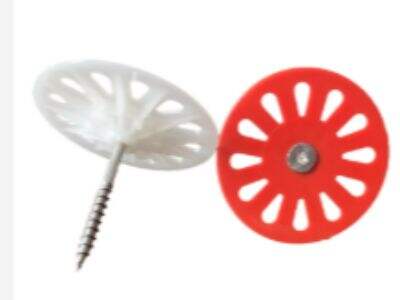Can't you ever feel hot or cold air blowing through your walls or ceiling? And it can be quite uncomfortable right? It can make it challenging, at times, to stay warm in the winter or cool in the summer. Fortunately, there’s a great way to ensure you stay at home feeling cozy irrespective of outside weather. This technique is known as thermal insulation. Thermal insulation acts to contain air in your house. In winter, it prevents warm air from escaping, and in summer, it keeps hot air from coming inside. But how do you ensure that the insulation remains settled? This is where thermal insulation fasteners will play a role.
What Is a Fastener for Thermal Insulation?
Thermal insulation fasteners are small parts, they can be iron or plastic. Their importance is that they keep the insulation in position. Although they seem basic, they’re a critical component to keeping your home comfortable. Without using these fasteners, over time, the insulation may shift out of position. This can leave gaps, letting hot air in during the summer and allowing cold air to escape during winter. So you see, these fastener are absolutely essential to keep your house warm and cozy.
The Importance of Proper Fasteners Selection
There are several reasons why choosing the right type of thermal insulation fasteners is crucial. First, using the wrong fastener may damage the surface to which it is fitted. If you attach a fastener to a metal wall, or a concrete wall, for example, it could damage the wall. Second, if the foam fasteners isn’t strong enough, it won’t hold the insulation in place properly. That means the insulation can slide out of place, and that creates gaps. Those gaps allow hot or cold air to escape your home, causing it to feel uncomfortable. Finally, the wrong fastener can result in elevated energy bills. This costs extra money because your heating or cooling system has to work harder when hot or cold air enters your home.
CHAPTER 6 Types of Thermal Insulation Fasteners
There is a variety of thermal insulation fasteners, with each designed for different applications. Here are the most common types:
Weld Pins — These insulation board fasteners are designed to be welded to metal surfaces. They keep metal-backed insulation in place. You will usually find them in places where there are a lot of metal, such as in factories or warehouses.
Concrete Screws – These are ideal for concrete or masonry walls. They have very deep threads that grips into the surface, which helps to hold the insulation in place. These are typically found in commercial buildings, such as offices or retail spaces.
Z-Clips – Fasteners to secure insulation in between two metal surfaces, like the walls of a metal building. These are easier and simpler to set up in comparison to other types, making them a preferred option for large-scale works.
Spring clips – These are like staples, but they grip insulation without penetrating either surface. They are often used in homes or apartments, and its prevent insulation from tearing without damaging the drywall.
Recommended Approaches to Installation
Thermal Insulation Fasteners: Types & Installation Now that you are aware of the various types of thermal insulation insulation fasteners, let us discuss the right installation process. Some best practices to follow are:
Use the correct fastener for your particular application. It can cause issues down the line to use the wrong sort.
Ensure proper installation of the fastener. Fail to do it right, though and the insulation could either damage the surface of your walls or let air in behind it (which would defeat the effect of the insulation).
Make sure the insulation upholsters closely against the surface. There should be no doubt or gaps, because that can allow air to escape, which can make your home feel less comfortable.”
Making the Right Choice
It can be hard to know how to choose the right thermal insulation fasteners for your project. Here are some key things to consider:
The profile or the type of surface to which you’ll be attaching the insulation Is it made of metal, concrete or something else entirely? Both require a different fasteners for each surface.
Consider where the insulation will be placed. Will it be put inside your home or out? Many fasteners are specific to an environment.
Review the type and thickness of the insulation you will be using. This data enables you to select the needed fastener.
The fastener must be strong enough to hold the insulation securely. If it is not strong, it will not do its job properly.
 EN
EN
 AR
AR
 BG
BG
 HR
HR
 CS
CS
 DA
DA
 NL
NL
 FI
FI
 FR
FR
 DE
DE
 EL
EL
 HI
HI
 IT
IT
 JA
JA
 KO
KO
 NO
NO
 PL
PL
 PT
PT
 RO
RO
 RU
RU
 ES
ES
 SV
SV
 TL
TL
 IW
IW
 ID
ID
 SR
SR
 UK
UK
 VI
VI
 HU
HU
 TH
TH
 TR
TR
 FA
FA
 MS
MS
 GA
GA
 IS
IS
 LA
LA
 MN
MN
 NE
NE
 KK
KK
 UZ
UZ



